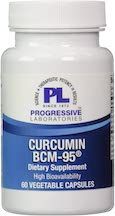How To Soothe Low Back Pain: The Top 4 Herbs for Pain Relief

Back pain is a very common ailment. It's the second most common reason why people go to see their doctor - with respiratory infection being first on that list. In fact, back pain is so common that it is said that back pain will affect 80 percent of men and 70 percent of women at some point in their lives.
When back pain strikes, everything little movement hurts—and remaining still might be almost impossible. Most people, reach for over-the-counter or prescription non-steroidal anti-inflammatory medications (NSAIDs) to relieve discomfort.
Despite this, there are a slew of negative effects associated with them. Fortunately, you may consider using natural treatments that provide fast and long-lasting comfort without the risk.
The Main Causes of Low Back Pain
Low back discomfort is the most common type of pain among American adults. In fact, back pain affects 80% of people at some point during their lives.
Low back pain is the most prevalent cause of disability in the United States, according to the American Chiropractic Association. But what is causing it? Let's take a closer look.
Your lower back consists of your spine and spinal cord, as well as ribs, cartilage discs, muscles, and nerve branches. Signs and symptoms of low back pain are varied, but the outcome is always the same: excruciating suffering. It doesn't take much to bring it on. The following are some of the most frequent activities that can cause low back discomfort:
- Pulled muscle or tendon.
- Lifting boxes or heavy objects
- Working out and even sleeping in an awkward position
- Inflammation
- Arthritis
- Osteoporosis
- Injured herniated and ruptured discs. ...
- Stress
- Fibromyalgia.
- Chronic poor posture
- Shoveling snow
How to Avoid Low Back Pain
The core—the muscles in your back and abdomen—is the first line of defense, which can be improved with exercises like planks or bicycle crunches.. Stretching after activity or strain, alternate your posture when you're sitting for lengthy periods, and keeping an eye on your posture are all good long-term preventatives.
When you know you'll be putting yourself at risk with certain activities, proceed with caution. If you're lifting something hefty, bend at your knees and not your back. It's also essential to avoid wringing your back while lifting. Even if you do everything possible, low back pain is still a possibility.
Take precautions against standard care.
Despite the fact that there is a wealth of information demonstrating how opioids can be harmful, many doctors still prescribe them for chronic low back pain.
In fact, it is considered the gold standard of care. Even a single dose of an opioid medication may lead to addiction. Dizziness, nausea, constipation, and respiratory problems are only a few of the negative effects linked with opioid use.
Gastrointestinal bleeding, liver failure, and kidney damage are all possible side effects of non-opioid pain relievers such as NSAIDs or acetaminophen when they are taken chronically. Fortunately, there are a number of natural treatments that can help you get relief from low back discomfort.
Supplements for Low Back Pain Relief
People have relied on natural pain relievers for years. Between their long-established effectiveness and their current efficacy in clinical trials, the following treatments may give genuine and permanent pain relief without any negative side effects.
Curcumin with BioPerine 1500mg

- Curcumin is a yellow-orange powder that has been used in India for thousands of years to treat inflammation, pain, and other ailments. It's now recognized as one of the world's most potent natural pain relievers, with anti-inflammatory properties that quickly alleviate low back discomfort.
- Piperine, a major component of black pepper has also been found to improve curcumin bioavailability.
- The curcumin will bind to fat and be more readily absorbed by the stomach. Cooking with coconut oil, or mixing with almond or coconut milk will help with better absorption.
Progressive Labs - Curcumin BCM-95

- Curcumin is a yellow pigment derived from the spice turmeric that works by inhibiting an inflammatory chemical called COX-2, which becomes activated when you get hurt.
- Its major disadvantage: It can be difficult for your body to absorb. That's why finding a highly bioavailable curcumin, such as BCM-95, is so vital.

- When turmeric is combined with other plants, its effectiveness is heightened. A 2020 clinical trial published in the journal Medicine (Baltimore) demonstrated that combining curcumin with boswellia relieved pain and lowered pain intensity within one hour, as effectively as acetaminophen without side effects.
- Boswellia inhibits a pro-inflammatory chemical called 5-LOX, which is frequently produced in cases of low back discomfort..
- According to a clinical research, a single dose of boswellia relieved pain quickly and efficiently, lowering the amount of discomfort experienced.

- White willow bark, also known as nature's aspirin because of its pain alleviating capabilities, is a source of salicin.
- Salicin inhibits the same pathways—COX-1 and COX-2— in the body: to relieve pain and inflammation.
- A daily dose of white willow bark was found to be more effective than a placebo in reducing low back pain in a study at the University of Michigan.
Final Thoughts
Natural supplements have proven effectiveness as back pain relievers at improved bioavailability compared with over-the-counter drugs such as NSAIDs or acetaminophen.
White willow bark, turmeric, boswellia are all natural remedies that may provide genuine and long-lasting pain relief without causing any harmful side effects.

